Click below to view the video
In 1993 140 charred scrolls and many fragments were found in the back room of an ancient church in Petra. What can we learn from the Petra Scrolls? Discover how the language used in the scrolls is even more important than the message of the scrolls.
Transcript
Video #23 This is a general transcript of a Dan Gibson video in the series: Archeology and Islam.
Hello, I’m Dan Gibson, and this video is about the Petra Scrolls. These old scrolls were found in the ancient city of Petra in Jordan, way back in 1993. They were discovered by archeologists, in the back room of an ancient church. Most of the church structure had collapsed, so these scrolls were discovered under the rubble.
The second thing to note is that all 140 scrolls had been burned. They were charred black, and some scrolls were broken into many pieces. A team of experts from Finland worked at carefully opening the scrolls and photographing them and getting the best photographs they could possibly get.
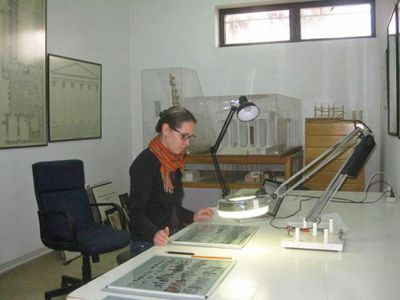
Work on the scrolls at ACOR
Those photographs were made available to experts around the world who mulled over the contents of the scrolls and wrote various papers and expressed various opinions.
In the year 2002 The American Center for Oriental Research published a five volume collection called the Petra Scrolls. I have a copy of the five volumes here behind me, and over the last six months I have enjoyed working my way through them, and also reading some of the opinions and comments of various experts who have also gone through this material.
Here are some thing we should notice:
First, the scrolls belong to one extended family. They are the personal legal documents of that family. They are the kinds of things you might stick away in a safety deposit box, and not look at for years. But you don’t want to get rid of them, because they might be useful some day. They are legal documents.
Second, even though the scrolls were found in a church, they are not church documents. This is NOT about who was baptized, who the priests were, or how the church was organized. No, this is about one family’s legal recorded.
Third, what is of interest here is not so much what the scrolls say… but how things. The names that are used, the people that are mentioned, the language that is expressed.
Fourth, the dates of these scrolls are very important. These scrolls were written down during the time that the prophet Muhammad was a young man. That is what makes them so important to our study of the Qiblas. Here we have a very narrow window back into time. Let me emphasize that. This is an extremely narrow window. It is all about one family. It is a Christian family, and these legal documents that were found in the Christian quarter of Petra, in the back room of a church. We must not expect them to throw light onto the pagan side of the city or the greater picture of what is going on.
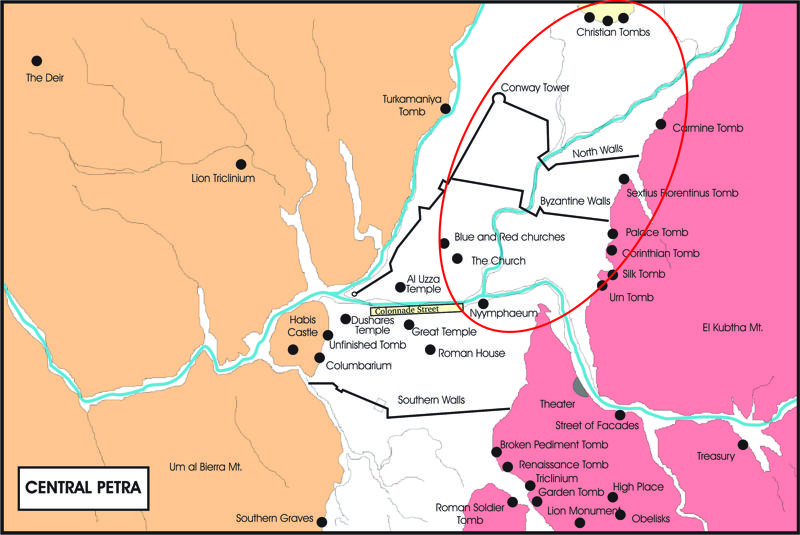
Christian sector in Petra
Here is a drawing of Petra. It is in a valley. The Christian churches are here on one side. The Christian tombs are here in the north. The rest of the city was pagan, at least until Muhammad came along. Here are temples to Dushara, Al-Uzza, and others. And of course, here is the foundation of the original Ka’ba building. None of these structures were ever connected to churches, or converted into churches. There is little evidence that that ever happened. But they were in use at the time.
Down in the south are the sites that would be later associated with the Muslim pilgrimage. At the time these scrolls were written, they were pagan sites. There were camping spots for pilgrims to Petra. There was a pillar here that pilgrims could throw stones at. There was a slippery slope that pilgrims could climb to the top of the mountain. large crowds of pagans could gather and face the sunset. Even Christians could gather, as there was also a Christian church there for the Christian pilgrims. For the tomb of Aaron the brother of Moses was on that mountain top.
But, outside of this church on-top of the mountain, and the Christian quarter, by-in-large the city of Petra still seemed to have remained a pagan city. The Byzantines ruled from a distance. The area around Petra and north was controlled by Christian tribes who were client rulers for the Byzantines.
This really was the backside of the Byzantine Empire. A few scattered churches had been built in Arabia, but overall, all of central and north Arabia was still in the hands of the pagans.
It was into this situation that Muhammad was born. His family were pagans who worshiped the gods of Petra. His wife was a merchant woman, typical of the families of Petra. His wife’s first cousin was a Nestorian priest in the city where Muhammad lived. (Waraqah ibn Nawfal) If that was in Mecca in Saudi Arabia, what was a Nestorian Priest doing down there? But if it was in Petra in Jordan, also known as Mecca, and it would fit perfectly into that Petra landscape.
Fifth, some people have assumed that the city of Petra was totally in ruins during the lifetime of Muhammad. This is simply not the case. After every earthquake, people dug themselves out, and rebuilt their homes. And that is what appears to be the case in Petra. Any destruction from the 551 AD earthquake was mostly cleaned up, just as the city recovered from the earthquake of 363 AD. So when the Petra Scrolls were written, there was a thriving city, and people were active in the area all around Petra.
The records of this Christian family record how they bought and sold land, and paid taxes throughout this whole period. Anyone who says that Petra was all in ruins, simply does not understand the history of this region.
The city is in ruins today, but 1,500 years ago it was still an active city. Around it were people doing agriculture. Merchants still came and went. Stores were open; churches and temples still functioned. Christians and pagans lived in their own parts of the city.
So the very first thing we learn from the Petra scrolls is that Petra was an active city.
Now there are about 140 different fragments of scrolls. Lots of fragments, so there are five volumes with all the different fragments and the translations
When I went through the scrolls, I noticed that there are lots of different kinds of legal documents:
Agreements on family property
Agreements on inheriting family land
There is the dividing of land between three brothers
Lots of taxation receipts
Agreements to transfer taxes to another person
A dowry agreement
A marriage contract
Several private letters
Agreements for the settlement of debts
A donation letter
Even a list of stolen item and the accusation of a priest who was using the house at the time, and seems to have moved away with some of the contents of the house.
Lots of different documents that we can look at but nothing that tells us specifically what’s going on in the greater area around or in Petra.
In reading these scrolls, it is obvious that Petra was an active city.
Now there are lots of little things that can be learned from the Petra Scrolls, but the most interesting and enlightening thing is that while Greek was the official language of the State, most of the people spoke Arabic.
You see, the Petra Scrolls are written in the Greek language, but they are filled with all sorts of Arabic words: names of places, and names of objects and things, terms used, and concepts expressed. So experts have been studying the Arabic language used in Petra, through the Petra Scrolls.
For instance, a Beer is a well or cistern, the term Bir Arabais is mixture of Greek and Arabic, and may be the root for Arabah. As in Wadi Arabah, field markers are Aaram, Hablah is the name for grapes, the name Na’im-El is known to us from Safaitic inscriptions, Grace of ‘El or the Grace of God, ‘ayn is a spring of water, bayt is a house, bayt akhbar is a large house, daraja – steps or terraces, hamra – red or brownish, sharqiya – eastern, so there are lots of Arabic words that show up, nahar – gully, sarg – ridge, hill, saddle, or inverted cooking pot, maal – property or the things that you own, marbas – threashing floor, nasbah – farm, and so forth.
As you go through ,there are so many words, and you realize that these people were expressing with each other, and talking with each other using the Arabic language. Tribes were known by the term beni – or sons of… You will find pages and pages of these words, especially Arabic used for the names of places.
Also of interest are the names of people. The Nabataean Arabs started using Greek names as early as King Aretas who called himself Philopatris. This king is mentioned in the Bible. And many Nabataeans use Greek names after that. So it is hard to distinguish an Arab name from a Greek name, as the Arabs were using Greek names.
One prominent person is Abu Karib ibn Jabala, ruler of the Ghassanids. He is the arbitrator of one of the legal disputes! His is a name that is found in the histories of Al-Tabari and others. It is exciting to see the names of an Arab ruler come to life in an ancient scroll.
So what are the most important things that we learn from the Petra Scrolls?
First and foremost, it has to do with the Arabic language. You see, all over the Middle East there are thousands of pre-Qur’anic ancient Arabic inscriptions and names. But none of them reflect the sort of Arabic that is found in the Qur’an.
You see in the Qur’an the definite article is eL. The word for house is bayt. If I wanted to say The House I would say al-Bayt. That is what you would find in the Qur’an, and in classical Arabic today.
But Dr. Michael Macdonald, who has worked with thousands of ancient inscriptions and graffiti across the Middle East has only found a very few instances of El being used. The most common is the use of Hn, or h. But the Qur’an only uses el! So how and where did the Hn evolve into el?
The early language used in Central Arabia around Mecca in Saudi, is different from the Qur’anic Arabic. It also contains words from Southern Arabian languages.
The language of the Qur’an is also different from the Arabic spoken by the Bedouin.
So how can the Qur’an claim to be bi-lisāni qawmi-hi ‘in the language of his people’ (Q14:4). Why can we not find any use of this type of Arabic anywhere in the ancient Middle East?
Recently Ahmed al-Jallad did a survey of Graeco-Arabica, or the Southern Levant.
(‘Graeco-Arabica I: The Southern Levant’ in Ahmad Al-Jallad (ed.), Arabic in Context. (Louvain: Brill, 2017), pp. 99–186.)
\ This region includes: southern Syria (areas including the Umm al-Jimāl, Boṣrā, and the black Ḥawrān desert. It also includes central and southern Jordan (such as Moab, Edom, Petra, and the Ḥismā), and areas in the Negev such as Beersheba, Elusa, and Nessana) This area coincides with the area under Nabataean control before the Romans absorbed it in 106 AD. At that time, the area was renamed Arabia Petraea (Arabia of the two Petras) and it was administered from Bosra, in Syria.
Dr. Mark Drurie, a linguist, in paper (On the Origin of Qurʾānic Arabic, 2019) mention that there are five features that can be identified as particular to this region, and found in the Qur’an. These include the use of the Tamarbuta, and Alif Maqsura, the glottal stop and the letter El.
Now Muslim scholars for a long time have promoted the idea that the Bedouin speak the purest form of Arabic, and have the purest Arab of culture. But this is not supported by linguists such as Jallad and Durie. The Arabic closest to the Qur’an was found in and around ancient Petra. It was the language of the city not the desert.
The Qur’an often speaks derogatorily of those who it calls ‘Arabs ((Q9:90;97-98;101; Q48:11; Q48:16; Q49:14). These are the desert-dwelling Bedouin (Q33:2)
That is because the Qur’an was written by and for urban people, with an urban background that you get this slant.
The evidence that the linguists put forward, suggests that the Arabic in which the Qurʾān was recited and written was Nabataean Arabic. The Nabataean variety, it is suggested, would have been widely understood throughout the Arabic speaking region because of Nabataean trade networks. But it was not considered to be a different language from local Bedouin dialects, but it was claimed to be a ‘clear’ form of Arabic. It was the kind of Arabic that the merchants and the poets used.
The Nabataeans preferred to write in Aramaic and later Greek, but they spoke Arabic at home. This is why early Muslim scholars could not find the source of early Arabic. They were assuming it came from the Bedouin. But it didn’t because Nabataean Arabic was not a Bedouin variety.
But once Petra had disappeared, and the Nabataean identity had dissipated, Nabataean Arabic was no longer distinctive to the region. The Arabs of Petra and Humeima took this Arabic dialect with them to Damascus as rulers, and later as Abbasid rulers to Iraq. In the end, the local dialect of Petra had become the common property of Arabs everywhere.
And it was not until the discovery of the Petra Scrolls, that linguists could start piecing the pieces of the puzzle together. It took Greek documents in Petra to reveal the origin of Qur’anic Arabic.
I am Dan Gibson, and this has been another video in the series Archeology and Islam.
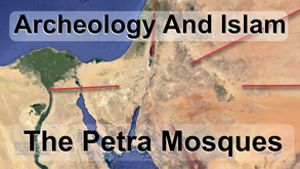
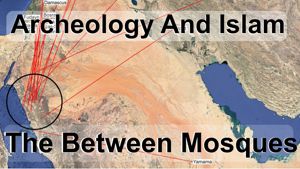
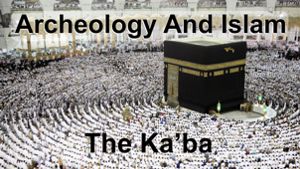
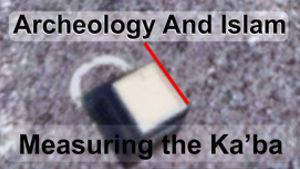
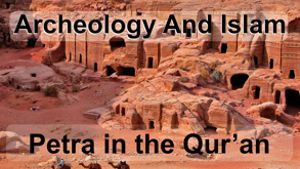
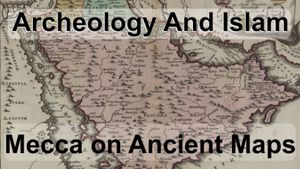
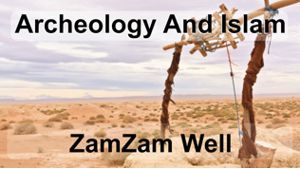
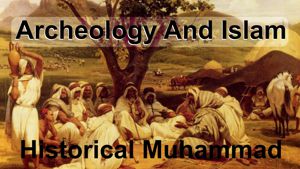
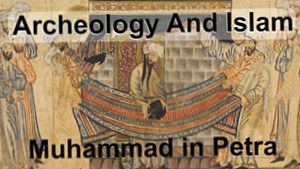
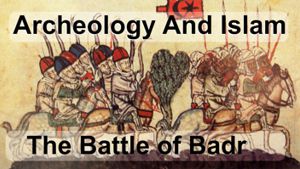
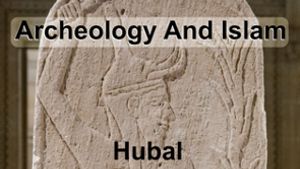
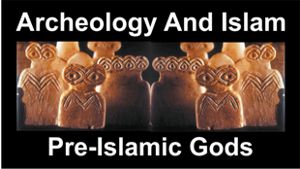
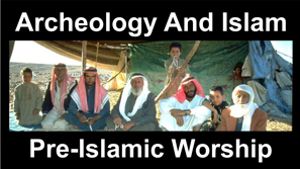
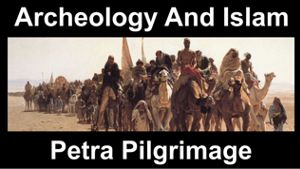
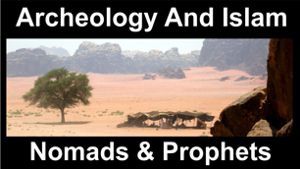
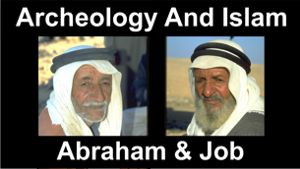
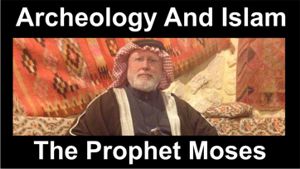
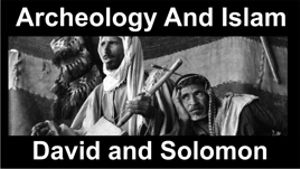
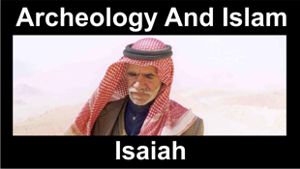
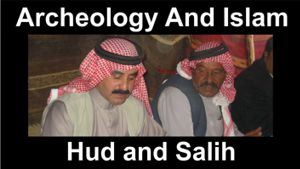

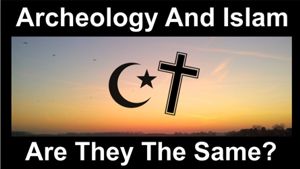
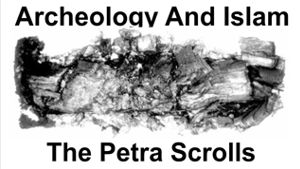
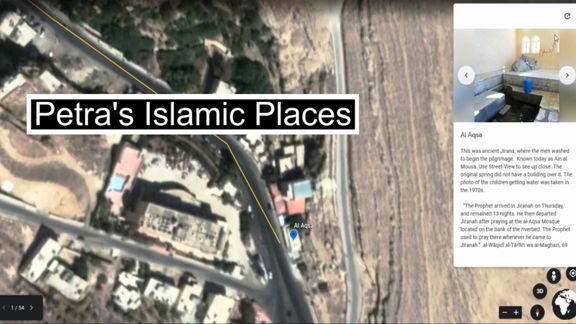

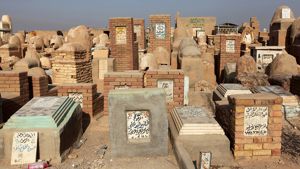
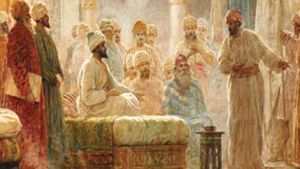
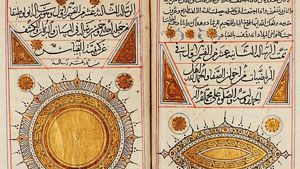
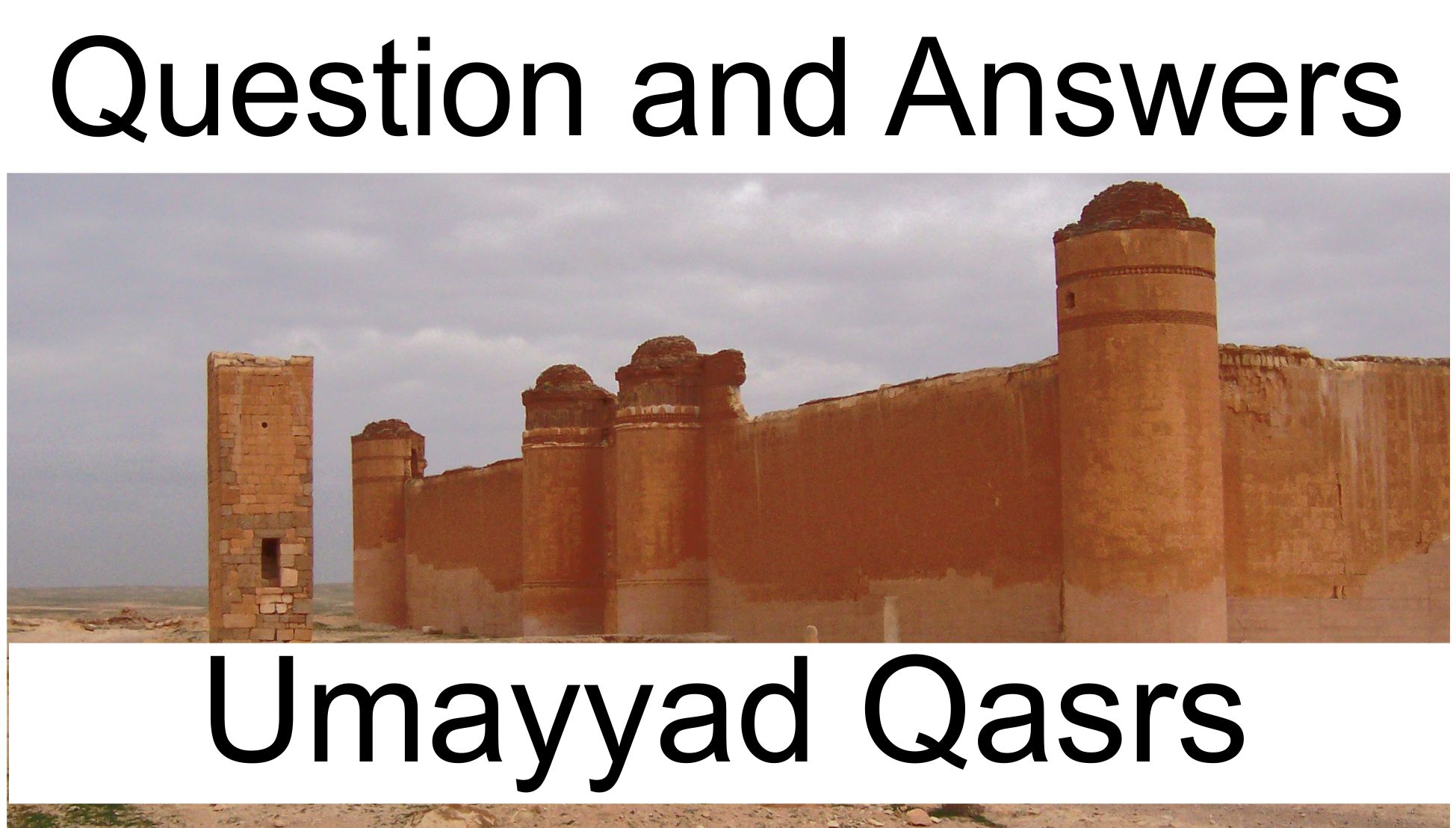
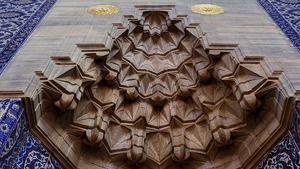
Page Discussion
Membership is required to comment. Membership is free of charge and available to everyone over the age of 16. Just click SignUp, or make a comment below. You will need a user name and a password. The system will automatically send a code to your email address. It should arrive in a few minutes. Enter the code, and you are finished.
Members who post adverts or use inappropriate language or make disrespectful comments will have their membership removed and be barred from the site. By becoming a member you agree to our Terms of Use and our Privacy, Cookies & Ad Policies. Remember that we will never, under any circumstances, sell or give your email address or private information to anyone unless required by law. Please keep your comments on topic. Thanks!